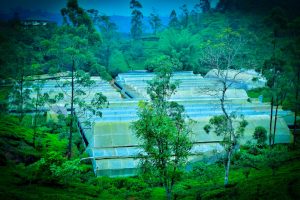Hatton Cut Flower Farm Project
 My intense love for nature whipped up the yearning in me to set up yet another cut flower farm. The land was selected after much searching, primarily because we were looking not just for land but land set in ideal surroundings which would help nurture the flowers into their full brilliance. The Hatton project is neatly laid out and planned to optimise the space that we secured. Our cut flower range is much more extensive here and it includes Gerberas, Roses, Statice, Gypsophyla, Phalaenopsis types and a few other varieties. We have tied up with leading companies from Holland and KF Bio Plants one of India’s leading cut flower producers based in Pune.
My intense love for nature whipped up the yearning in me to set up yet another cut flower farm. The land was selected after much searching, primarily because we were looking not just for land but land set in ideal surroundings which would help nurture the flowers into their full brilliance. The Hatton project is neatly laid out and planned to optimise the space that we secured. Our cut flower range is much more extensive here and it includes Gerberas, Roses, Statice, Gypsophyla, Phalaenopsis types and a few other varieties. We have tied up with leading companies from Holland and KF Bio Plants one of India’s leading cut flower producers based in Pune.
Hatton is a town in the Nuwara Eliya District of Central Province, Sri Lanka. It is approximately 83 kilometres (52 mi) southeast of Colombo and 44 km (27 mi) south of Kandy and is situated at an elevation of 1,271 m (4,170 ft) above sea level. It serves as a gateway to Adam’s Peak (Sri Pada) considered a sacred abode and Sinharaja Forest Reserve. Hatton is better known for its Ceylon tea plantations and industry.
In these salubrious environs are found two of Sri Lanka’s most beautiful waterfalls the Devon Falls and St. Clair’s Falls.
Devon Falls is a waterfall in Sri Lanka, situated 6 km west of Talawakele, Nuwara Eliya District on A7 highway and 1,140m above sea level. The fall is named after a pioneer English coffee planter named Devon. The Waterfall is 97 metres high and ranked 19th highest in the Island. The Falls are formed by the Kothmale Oya, a tributary of Mahaweli River.
St. Clair’s Falls is one of the widest waterfalls in Sri Lanka and is called the “Little Niagara of Sri Lanka” It is situated 3 km west of the town of Talawakele on the Hatton-Talawakele Highway in Nuwara Eliya District.The fall is 80m high and hence the 20th highest waterfall in Sri Lanka. St. Clair’s falls comprises of two falls called “Maha Ella” and “Kuda Ella,” which is 50m high and was created by a tributary of Kotmale Oya.
It is in these environs that our Hatton project finds itself, where our flowers are grown to precise environmental conditions for the export market and out of love for nature.